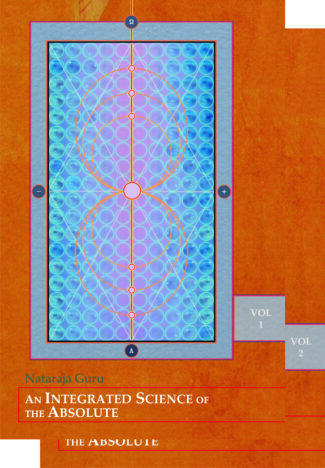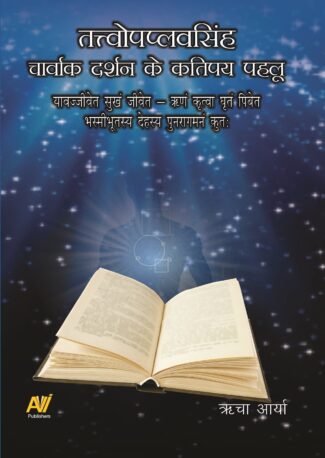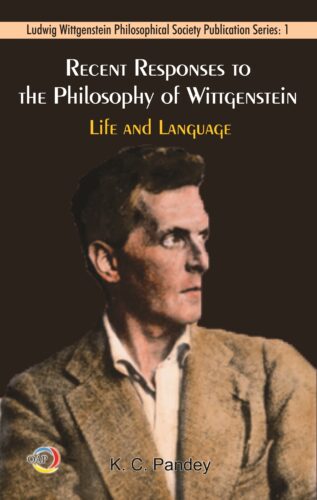

Dhamma – Anusi...
Dhamma – Anusilana
Investigating the Buddhist Traditions by: Ujjwal Kumar , Bimalendra KumarThis book is an anthology of seventeen cerebral articles from well-known Buddhist scholars associated with major universities across the globe deliberating many a topic associated with Buddhist religion and its philosophies as part of our constant striving to understand the fundamental nature of what the Buddha wanted us to realize.
Original price was: ₹1,600.00.₹1,440.00Current price is: ₹1,440.00.
ISBN: 9788124611166
Year Of Publication: 2022
Edition: 1st
Pages : xx, 452
Bibliographic Details : Index
Language : English
Binding : Hardcover
Publisher: D.K. Printworld Pvt. Ltd.
Size: 23
Weight: 770
There have been serious attempts to understand the Buddha and his teachings since the inception of Buddhism some 2,600 years ago. All through the history of Buddhism, scholars were constantly striving to understand the fundamental nature of what the Buddha wanted us to realize. This book is an anthology of seventeen cerebral articles from well-known Buddhist scholars associated with major universities across the globe. In four parts – Meditation; Personality and Position; Dharmakirti and Persons; and Principles, History and Grammar – it highlights some pertinent topics associated with Buddhism and its legacy.
Part I discusses the diverse dimensions of meditation, dedicating itself to the kiriya (action) aspects of Buddhism. Part II is an attempt to delineate and study the major branches of Buddhism. Part III deliberates on the contributions of Dharmakirti and Rahula Sankrtyayana to the Buddhist philosophy along with the concept manusa-panatipata and how the revelation of reality of human experience by analysis helps a person to achieve wisdom in the light of Majjhima Nikaya Anathapindikovadasutta. Part IV has papers on different philosophical and applied concepts of Buddhism.
This volume thus should benefit one in understanding many an aspect of Buddhism vis-à-vis its enormous corpus of literature and teachings. It should highly benefit the students of Buddhism and for those who are keen to fathom deep into the myriad topics of Buddhist philosophy and teachings.
Preface
Contributors
Part I: Meditation
1. G.A. Somaratne
Can One Become an Arahat without Practising Meditation?: A Study of the Wisdom-Liberated (Panna-Vimutta) in Early Buddhism
Wisdom-freedom
Meditation Practice
Wisdom-liberated and Other Arahats
Conclusion
2. Mahesh A. Deokar
Complementarity of Method and Wisdom
What Is a Path?: How Is It Complementary to the Goal and the Wisdom?
A Path Is Not Right, if It Has no Clear Goal, or if It Does not Lead to a Desirable Goal
Know What Is Right and Useful; Forget What Is Wrong and Useless
Buddha’s Wisdom: The Four Noble Truths, and Plurality of Path – Multiple Paths, but Singular Goal
Two Causes of Suffering: Unwise Emotions and Erroneous Cognition
Different Medicines for Different Diseases, Different Doses for Different Intensity, Different Treatment for Different Patients
Threefold Training
Fivefold Investigation
Sevenfold Purity
States Pertaining to Enlightenment
Personality, Capacity and Attitude: Three Key Factors for Complementarity
Who Decides the Complementarity?: A Teacher, Scripture or Anything Else?
3. Hari Shankar Prasad
The Problematic Mind, Meditation and the Deep Structure of Consciousness: A Buddhist Perspective
The Basics of the Buddha’s Life and Teaching
Key Pali Terms
The Buddhist Conceptual Framework
Buddhist Cosmology
Psycho-Corporeal Interactive Relationship
Citta, Manas and Vinnana
Nama and Its Four Constituents
Twelve-link Formula of Man’s Consciousness Journey
Bhavaṅga-citta: Deep Structure of Consciousness
Meditation: The Dynamics of Liberation
4. Tashi Tsering: The Practice of Meditation in a Nutshell
The Preliminary Practices for Meditation as the Sevenfold Posture of Vairocana
Meaning of the Word Meditation
Classification
Analytical Meditation
Stabilized Meditation
Training on Calm Abiding
Non-Moving The Object
Non-Moving Body
Non-Moving Eyelash
Non-Distracting the Mind on Others
The Object of Calm Abiding: Internal and External
Faults and Antidotes of Calm Abiding
Training on Insight
Proving All Appearances Are Our Mind
Proving Mind Is An Illusion
Proving an Illusion Is Natureless/Lacking Inherent Nature
Temporal Antidote (to Overcome Defilements)
Manner of Emergence of Defilement
Methods of Overcoming Defilements
Temporal Methods
Method of Reducing Suffering of Having Less Wealth
Permanent Antidote (to Overcome Defilements): Ultimate Methods
Manner of Meditating on the Emptiness View
Inseparability/Unification of Appearance and Emptiness
Inseparability/Unification of Hearing and Emptiness
Inseparability/Unification of Clarity/Luminosity and Emptiness
Inseparability/Unification of two truths
Inseparability/Unification of Cyclic Existence and Liberation
Meditation on Deity
Choosing Deity
Preliminary Stage
Actual Stage
Conclusion Stage
Part II: Personality and Positions
5. I. Indasara: Brief Explanation of Buddhist Concept of Personality
Classification of Personality in Buddhist Teaching
6. Wangchuk Dorjee Negi Buddhism: Science of Mind
Body
Mind
7. Dipen Barua: The Conceptual Analysis of Pasa (Bondage) in Vedic and Buddhist Thoughts
Introduction
The Concept of Pasa in Vedic Thought
The Concept of Pasa in Buddhist Thought
Doctrinal Proximity of Pasa and Samyojana in Samyutta Nikaya
Conclusion
8. Hari Shankar Prasad: Sailing against the Current: The Buddha, Buddhism and Methodology
Background to Buddhism: Dominance of Substantialist Philosophies
The Task of Philosophy
Section 1: Academic and Non-academic Perspectives on the Study of Buddhism in Contemporary India
How Modern Indian Academicians Perceive Buddhist Philosophy
Dependence on Western and Japanese Scholarship
Section 2: European Colonization of Indian Mind and Culture: The Enemy of Indigenous Indian Studies
Europe and India: Mutual Exposures
Colonization: A Poisonous Gift for India
Europe’s Intellectual and Cultural Movement: An Impact on India
European Encounters with India
Colonial Attitude and Aims to Kill India’s Self, Subjectivity and Spirituality: A Summary
Modernity/Postmodernity as the Destroyer of the Indian Traditional Values
Section 3: The Buddha’s Sailing against the Current Belief System (Paṭisotagami)
The Buddha’s Radical Paradigm Shift
Who Is the Buddha?
Pratītyasamutpada: The Buddha’s Concept of Truth
Therapeutic Paradigm of the Buddha
The Buddha’s Paradox: Whether to Teach or Not to Teach
Section 4: The Buddhist Methodology
Buddhist Canons and Philology
Buddhist Hermeneutic Principles
Methodical Integration of Discourses and Discipline
The Buddha’s Methodical Silence
Miscellaneous Methods Used by the Buddhists
The General Conceptual Framework of Buddhism
The Impersonal Nature of Man
Method of Mereological Reductionism
Two-truths Method
The Madhyamika Methodology
The Method of Tetralemma: Transcending the Limits of language
The Prasanga Method of Candrakirti
Vasubandhu’s Hermeneutic and Synthetic Methods
The Phenomenological Method of Yogacara–Vijnanavada
9. Sanjib K. Das: Subtle-Increasers (Anusaya), the Root of Existence: 209 An Abhidharmakosakarika View
Introduction
Link
Division
Five Views and Five Non-views
Part III: Dharmakirti and Persons
10. Sachchidanand Mishra Dharmakirti on Determinate Perception
11. Madhumita Chattopadhyay Contribution of Sankrtyayana to the Study of Pramanavarttika
12. Abhinav Anand and Ajit Kumar Behura Induced Abortion as Panatipata: Revisiting Buddhist Position on the Right to Life of an Unborn
Introduction
Pali Texts and the Origin of the Human Being Life
Recorded Cases of Abortion in the Pali Texts
Ethical Precepts Injunction against Taking a Human Life (Manusam-Viggaham)
There Is No Necessary Qualitative Difference
Panatipata Veramaṇi: Injunction against Intentional Killing
Brings Bad Rebirths and Unfavourable Consequences
Destroying a Developing Foetus Interrupts the Journey Toward the Nibbana
Conclusion
13. Wadinagala Pannaloka
Analysis, Wisdom and Healthy Life: An Investigation into the Value of Analysis in Anathapindikovadasutta
Introduction
Nature of Human Experience
Analysis
Wisdom
Wisdom as Practice
Analytical Wisdom in the Anathapindikovadasutta
Internal Senses
Sense-objects
Sense-consciousness
Sense–Contact
Sense Feeling
Six Elements and Five Aggregates
Four Immaterial Realms
Existence Here and Beyond
The Range of Percepts
Conclusion
Part IV: Principles, History and Grammar
14. Dilip Kumar Mohanta: Buddhism and the Principles of Good Governance
15. K.T.S. Sarao: The Buddha’s Reluctance to Visit the Gaya Dhammakhetta and Advent of Buddhism in this Region
16. Anand Singh: Elephants in the Maurya Age Sacred Symbolism and Imperial Tradition
Sacred Symbolism
Imperial Tradition
17. A. Ruiz-Falques: The Sword and the Sheath: Three Notes on Kaccayana 1: Attho Akkharasannato
Introduction
The Status of Kaccayana 1 in the Pali Tradition
The Formulation of Kaccāyana 1 and Its Parallels
Kaccayana 1 and Legends of Grammatical Revelation
Concluding Remarks
Subject Index
Name Index
Title Index











There are no reviews yet.